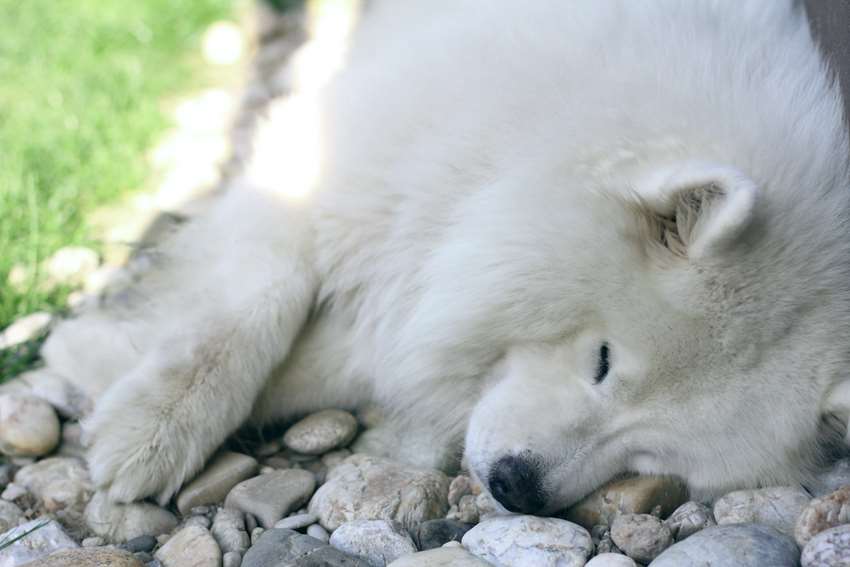Pets need their fur coats to protect their skin. It naturally provides temperature control, which is disturbed by shaving. Most vets do not recommend shaving pets
With summer comes higher temperatures—a time when most of us start wearing fewer and lighter clothing. If we look to cool down by removing layers, shouldn’t we do the same for our pets? Probably not, say the experts. There’s a big difference between manufactured clothing and natural fur, which is naturally cool in the heat and warm in the cold. Shaving a pet interferes with its natural ability to regulate temperature; this is especially true for cats.

Cats are better at dispelling body heat, grooming themselves, plus they are usually more mobile than dogs. They are quick to move to a shadier spot when temperatures rise or a sunnier spot when chilled.
How to keep pets cool
While shaving may seem like the easiest way to ensure a pet stays cool in the heat because it interrupts their natural temperature control, veterinarians usually advise against it. Instead, animal doctors agree that it’s much better to follow simple acceptable practices to ensure your pet doesn’t overheat.
Many pets love to travel where you only have to mind associated risks, like poisoning of flea treatments when you get home, tick bites, even bed bugs could travel back to your home. At the mere jingle of the car keys, they run to the door and beg to be permitted to go on the adventure. Though their company is usually enjoyable, it creates a situation in which you cannot avoid leaving them in the car.
As good a job as your pet’s body does of regulating temperature, it cannot alleviate the impact of the extreme heat a vehicle can reach while sitting in the sun for even a short time.
While most vets advise against shaving, frequently brushing removes the shed undercoat and allows air to circulate and work naturally to keep the pet cooler.
Hot cars are death traps
According to the RSPCA Queensland, they receive more than a thousand distress calls each year over pets left in cars. In Australia, leaving an animal without appropriate water and shelter is a prosecutorial offense under the Animal Care and Protection Act 2001. When away from home with your pet, the RSPCA advises:
- DO NOT leave any animal in the back of a parked utility, especially in direct sunlight.
- Instead of leaving a pet in the car, secure it in a shaded, safe area outside the vehicle.
- Provide plenty of cold drinking water.
- Provide reliable supervision.
- When driving with a pet, be sure the car has adequate ventilation—especially if the animal is in a cage or restrained so they cannot seek cooler areas.
Heatstroke and heat exhaustion
Heatstroke and heat exhaustion are dangerous and can overtake your pet quickly. It’s critical to watch your pet closely, especially when in hot weather. Cats like dogs pant when they’re too hot, as this open-mouthed rapid breathing helps them to manage their body temperature. This is an obvious symptom but there are many others which are not so obvious. While activity can be a contributor, depending upon the temperature and your pet’s breed, even a brisk walk can bring on heat-related conditions. Interestingly, research shows that only 20% of pet owners can afford to pay a $5,000 vet bill, so it’s only best to be preventative and know the symptoms to look out for before a situation escalates. Watch for the following signs and move your pet to a cool place:
- Fatigue or weakness
- Stupor
- Panting
- Unwillingness to get up and walk
- Dehydration
- Lack of urine
- Dizziness
- Elevated heart rate
- Vomiting or diarrhea (sometimes blood)
- Muscle tremors
If your pet is lying down and refuses to get up, don’t force it. Acting lethargic may be its way of communicating distress. Immediate first aid from a veterinarian is the best thing to do for a pet suffering from heatstroke or heat exhaustion.
Final thoughts
Pets need fur coats to protect their skin. It naturally provides temperature control, which is disturbed by shaving. Most vets do not recommend shaving pets, but there are many factors to consider, and each case is different.
Before shaving, consult your veterinarian first and then find a professional to do the job. Running clippers or scissors around skittish animals can result in painful wounds—to the groomer or the pet. What’s more, paying for a visit to the salon is usually far less costly than a trip to the veterinarian or doctor for stitches.
